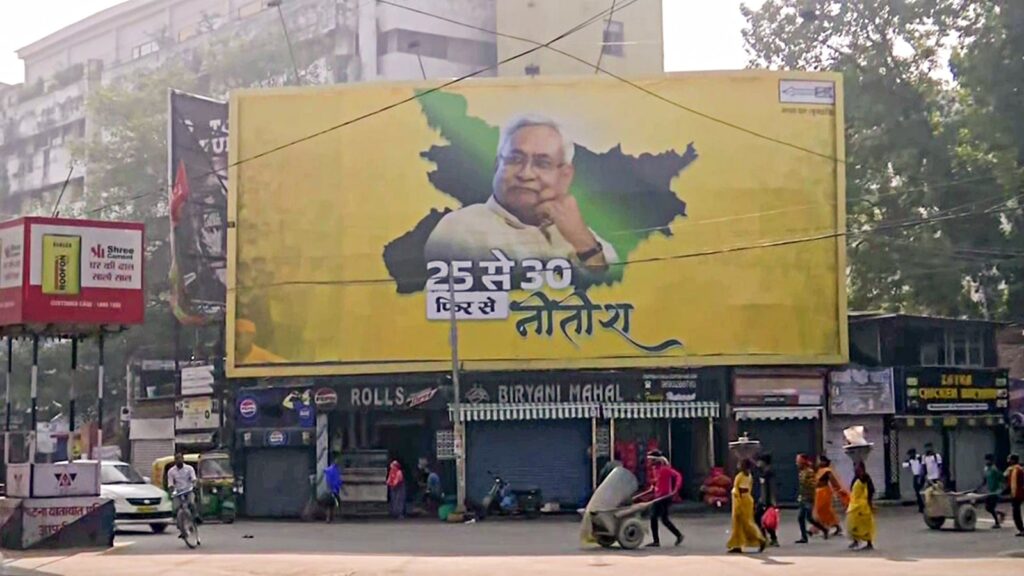PatnaNovember 13, 2025 06:24 PM IST
First published on: Nov 13, 2025 at 06:22 PM IST
Already enthused by most exit polls giving it a clear advantage, the NDA is banking on three factors to retain power comfortably: a better social combination; welfare benefits for women, especially the “dashazari” scheme or the Mukhyamantri Mahila Rojgar Yojana, under which 1.5 crore prospective women entrepreneurs are eligible to receive Rs 10,000 in the first instalment; and an over-riding Nitish Kumar factor. If this works out, Nitish, who first became CM in October 2005, will take oath for the top job for a record 10th time.
For the NDA, there were a couple of things it had to do in the elections: get the social arithmetic right and play up the development narrative, especially the social welfare schemes. Given the importance of women’s vote in the rise of Nitish Kumar and his two decades in power, the narrative around the “dashazari scheme” and all that the CM has done for women voters over the years became a cornerstone of the NDA’s poll plank. That women have outvoted men by 8.8 percentage points will give the CM and his allies hope.
Then there is the social arithmetic. As there was a thin difference between the NDA (37.26% vote share) and the Mahagathbandhan (37.23%), the return of Chirag Paswan’s Lok Janshakti Party (Ram Vilas) and Upendra Kushwaha’s Rashtriya Lok Morcha (RLM) added to the ruling coalition’s strength. Together, the smaller allies had polled more than 7% last time.
The Mahagathbandhan added Mukesh Sahani’s Vikassheel Insaan Party (VIP) and I P Gupta’s Indian Inclusive Party (IIP) to its fold. While the VIP, which was part of the NDA in 2020, received 1.5% of the votes in the last polls, the current election was the IIP’s first. This means that the NDA headed into this election with an arithmetic advantage of about 5%. As elections in Bihar often boil down to social combinations, the NDA enjoys a lead on this front.
The biggest advantage for the ruling coalition, however, could prove to be the CM himself. Battling against the anti-incumbency of 20 years, Nitish worked out a model to give some doles to retain, if not consolidate its votes. Just ahead of the election, the government opened its coffers to announce 125 MW of free power to 1.67 crore consumers and a hike in social security pension from Rs 400 per month to Rs 1,100 per month, among other things. When his chief rival Tejashwi Prasad Yadav of the RJD grabbed the initiative with a promise of Rs 2,500 monthly allowance under the Maa Bahan Maan Yojana, the CM tried to neutralise it with the Mukhyamantri Mahila Rojgar Yojana that provided the initial, non-refundable instalment of Rs 10,000 to the beneficiaries and an additional Rs 2 lakh within six months, if the conditions of the scheme are met. The scheme is routed through self-help groups called Jeevika that have become a major instrument in the government’s hands as the ruling coalition looks to consolidate its hold on women’s votes.
Nitish Kumar, despite the Opposition raising questions about the state of his health, has been the NDA’s biggest asset. Though he read out for written speeches in his public meetings, he ended up attending 84 rallies, just one fewer than Tejashwi, who is decades younger than him. The CM shouldered the weight of the NDA’s entire campaigning, with even Prime Minister Narendra Modi addressing 14 rallies and attending two roadshows.
The 2025 election, thus, looks to be one whose outcome may well be determined by the social and political capital that Nitish Kumar has earned in the last two decades as the head of the state government. If the NDA wins a simple-plus majority, it will be read as a vote to retain the CM who has done more than any to bring Bihar to par with the rest of the country on social and development indicators. If the ruling coalition crosses 150 seats, as some exit polls suggest might happen, it will be remembered as the “dashazari” election, a testament to Nitish Kumar’s political acumen.


